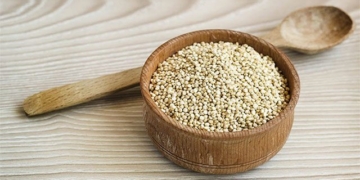A study published by the National Academy of Sciences (NAS) on January 8 reveals that, on average, each liter of bottled water from popular brands may contain 240,000 plastic particles—10 to 100 times higher than previous estimates—raising concerns about potential risks to human health.

Each liter of bottled water from the top three market brands contains between 110,000 and 370,000 plastic particles. (Illustrative image).
In recent years, the world has increasingly focused on microplastics, as microplastics—plastic particles smaller than 5 millimeters—have been found everywhere, from the ice caps at the poles to remote mountain peaks, infiltrating ecosystems and contaminating human water and food sources. Meanwhile, nanoplastics, which are smaller than 1 micrometer, can penetrate the digestive and respiratory systems, directly entering the bloodstream and subsequently invading internal organs, including the brain and heart, and even crossing the placenta to affect the fetus.
Currently, there is limited research on the impact of plastic particles on ecosystems and human health. Some early laboratory studies have indicated a correlation between plastic particles and health issues such as reproductive abnormalities and gastrointestinal problems.
To study nanoplastics in bottled water, scientists employed the stimulated Raman scattering microscopy (SRS) method, utilizing two laser beams that scan through the sample to generate specific molecular resonances, which are then analyzed using computer algorithms. The research findings indicate that each liter of bottled water from the top three market brands contains between 110,000 and 370,000 plastic particles, with 90% of these being nanoplastics and the remaining 10% being microplastics. The most prevalent type of plastic in bottled water is nylon, likely originating from plastic filters used to purify the water, and polyethylene terephthalate (PET)—a common material in bottle production.
Co-author of the study, Associate Professor of Geochemistry at Columbia University, Beizhan Yan, recommends that consumers consider using alternative water sources, such as tap water, if they are concerned about ultra-small plastic particles in bottled water. However, he also emphasizes that the research team does not definitively advise against drinking bottled water, as the risks associated with dehydration are more pressing than the potential harm from plastic particles entering the body.
In the future, the group of scientists hopes to conduct studies on tap water, which is also believed to contain microplastic particles, albeit at lower levels.




















































